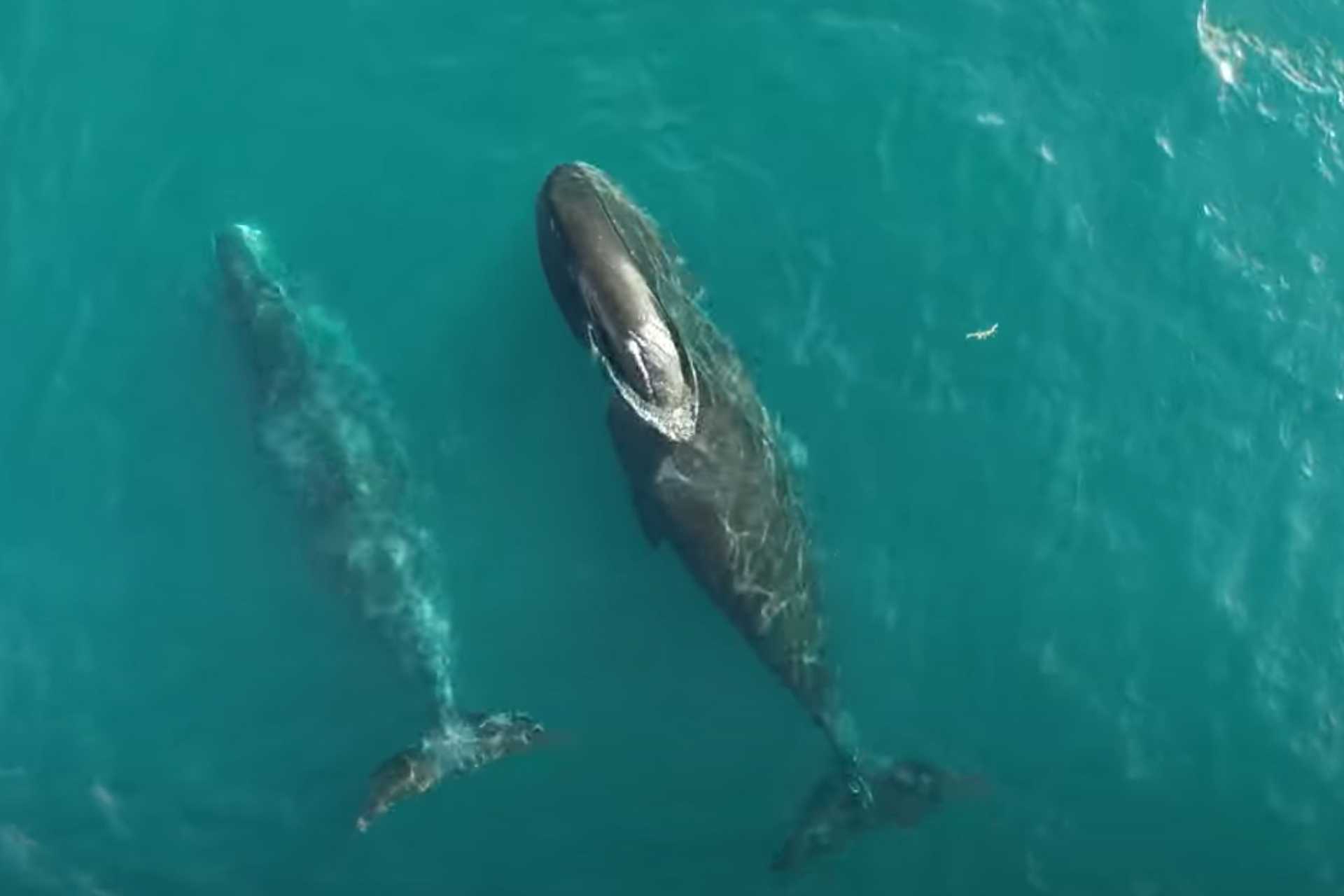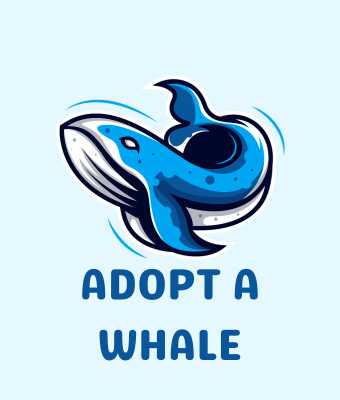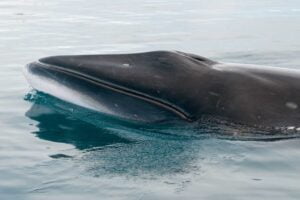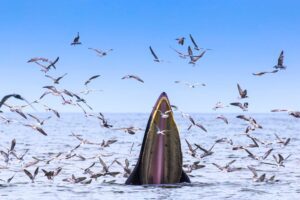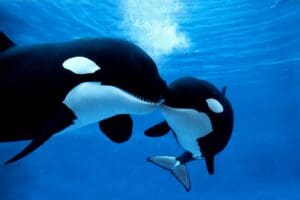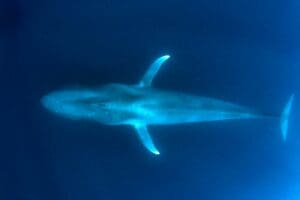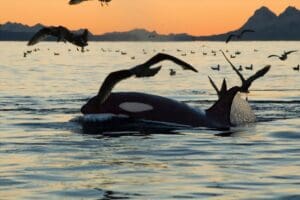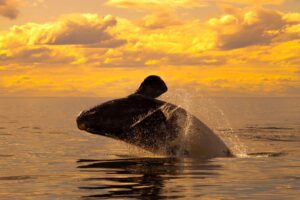Bowhead Whale: Giants of the Arctic
Picture the chilly, frozen waters of the Arctic, home to the magnificent bowhead whale, reigning supreme under the ice and in the cold depths. Let’s delve into the extraordinary lives of these awe-inspiring beings. With their ancient heritage and specialized adaptations, these deep-sea titans flourish in one of the planet’s most extreme environments.
Some interesting facts
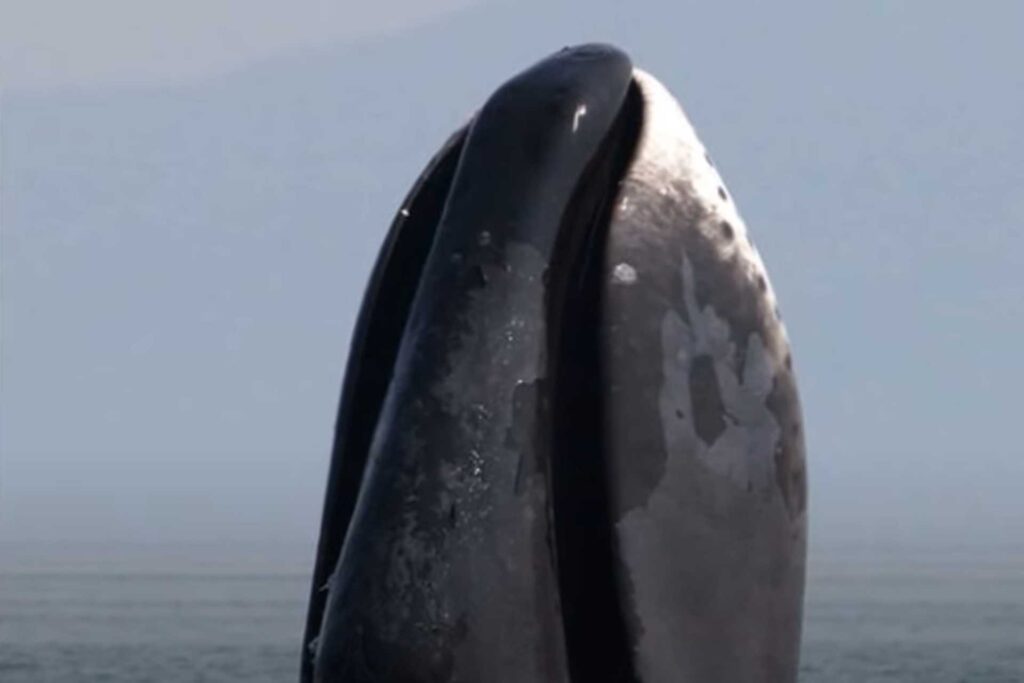
Physical Characteristics of Bowhead Whales
Bowhead whales are true ocean giants with impressive physical features that you’ll find fascinating. These magnificent creatures are built to survive in some of the harshest environments on our planet.
Size and Weight
Regarding size, you’d be amazed to know that adult bowhead whales can reach lengths of up to 60 feet! That’s longer than a city bus. Your eyes would widen at the scales, too, because these massive mammals can weigh anywhere from 75 to 100 tons. It’s no wonder they’re among the largest animals in existence.
Adaptations to Cold Environment
Living in frigid waters doesn’t come easy, but bowheads are well-equipped. Their blubber, which can be almost 20 inches thick, acts like a cozy winter coat, insulating them from the icy temperatures. Plus, their large heads can break through sea ice to create breathing holes—a pretty nifty and essential skill for survival in the Arctic.
Baleen Plates: Feeding Adaptation
One of the most distinctive adaptations of bowhead whales is their baleen plates. Unlike teeth, these long, fringed plates are perfect for trapping their favorite meals. As you watch them feed, you observe them skillfully sifting through the water, straining tiny prey like a sieve.
Lifespan and Signs of Aging
Did you know you could be looking at a bowhead whale that’s been around since Shakespeare? It’s true! Bowhead whales have astonishingly long lifespans, often exceeding 200 years. While it’s challenging to determine their age, scientists examine changes in their eye tissue to find clues about the years they have traversed the seas.
Habitat and Distribution
Where these whales live and travel is crucial to their survival and tells much about their lifestyle.
Arctic and Subarctic Waters
Bowhead whales make their homes in the cold Arctic and subarctic waters, where ice floes and frozen landscapes are the norm. They are amazingly adapted to this chilly habitat and certainly make the most of living at the top of the world.
Seasonal Migration Patterns
Bowheads undertake epic migrations each year, following the edge of the ice as it retreats in the summer and advances again in the fall. They have quite the internal compass, navigating these vast distances with a purpose and precision that keeps them close to their food sources.
Critical Habitats and Breeding Grounds
For breeding and calving, bowheads seek out specific areas that provide security and optimum conditions for the young. These critical habitats are essential for the survival of their species, making them a primary focus for conservation efforts.
Feeding Habits and Diet
Let’s take a closer look at what these whales eat to maintain their imposing size and strength.
Krill and Plankton: Dietary Staples
Both krill and plankton are small but mighty staples in the bowhead whale’s diet. These tiny creatures might not seem much, but when consumed in the enormous quantities that bowheads are capable of, they provide all the necessary nutrition.
Feeding Strategies and behaviors
Bowhead whales have some interesting ways of feeding. They might skim the surface or create bubble nets to concentrate their prey. Observing their varied strategies can give you a glimpse into the evolutionary intelligence of these animals.
Impact of Ice Coverage on Food Availability
Ice coverage plays a significant role in the availability of food for bowheads. As the ice expands or retreats, it affects where krill and plankton can be found, subsequently impacting the whales’ food sources. It’s all connected in the Arctic ecosystem.
Reproduction and Life Cycle
Understanding the reproduction and lifecycle of bowhead whales offers insight into their survival and the careful timing of their existence.
Mating Rituals and Breeding Season
During the breeding season, bowhead whales participate in intricate mating rituals involving song and gentle physical contact. These behaviors strengthen social bonds and ultimately lead to reproduction.
Calving Interval and Maternal Care
Bowhead whales typically have a long calving interval, sometimes spanning several years. This ensures that each calf receives extensive maternal care, giving it the best start to life in the harsh Arctic waters.
Growth Rate and Weaning Period
Bowhead calves grow rapidly, thanks to the rich milk provided by their mothers. This weaning period is a time of significant growth, setting the calves up for a future of navigating the seas.
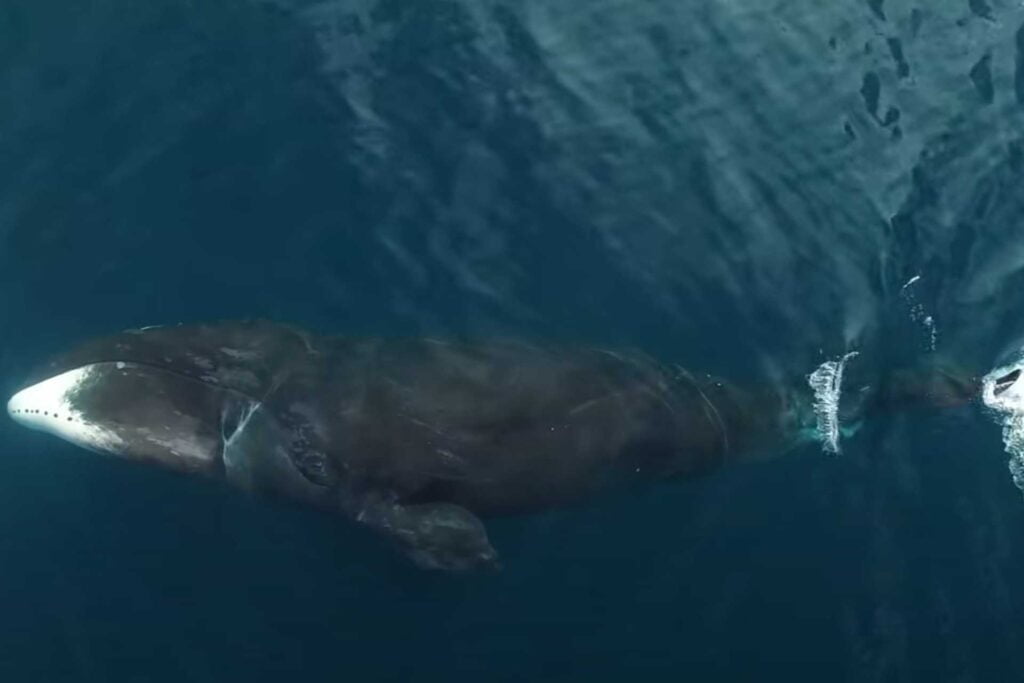
Social Structure and Communication
Bowhead whales have a rich social life that is expressed through their interactions and communication.
Group Dynamics and Solitary Behavior
You might spot bowheads swimming solo or in small groups. Depending on the time of year and the availability of food, their social structure can shift, reflecting their adaptability to environmental conditions.
Vocalizations and Songs
Their language is made up of complex vocalizations and songs that can resonate across the ocean. These sounds are crucial for maintaining group cohesion, navigating, and possibly even finding mates.
Interaction with Other Marine Mammals
Bowheads aren’t the loners of the sea; they interact with various other marine mammals. From playing with seals to sharing feeding grounds with others, they are an integral part of the marine community.
Conservation Status
Bowhead whales have been through a lot, but understanding their status today is key to their future survival.
Historical Exploitation and Current Threats
Having been heavily exploited for their blubber and baleen in the past, bowheads now face modern threats such as climate change and industrial impacts. Managing these threats is vital for their conservation.
Population Recovery Efforts
Bowhead whale populations have seen some promising increases thanks to international regulations and recovery efforts. This is a hopeful sign suggesting these creatures might persevere with continued dedication.
Protected Areas and Legal Protection
Creating protected areas and enacting legal protections are essential strategies in bowhead whale conservation. Ensuring their habitat remains safe supports their continued recovery and longevity.
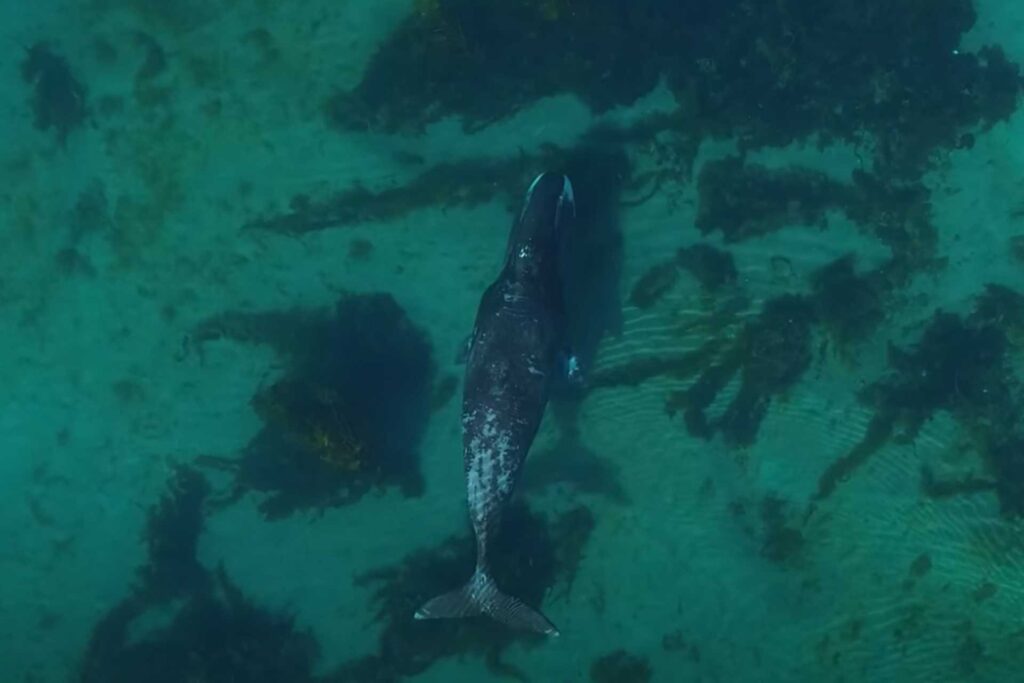
Human Interaction and Cultural Significance
Interactions with humans, both past and present, have greatly impacted bowhead whales, not only ecologically but also culturally.
Indigenous Hunting and Subsistence Uses
Indigenous peoples have a long history of hunting bowhead whales, primarily for subsistence purposes. This has deep cultural significance and provides much-needed resources for their communities.
Bowhead Whales in Mythology and Art
Bowhead whales are featured in ancient stories and traditions, symbolizing strength and endurance. Their majestic presence has inspired myriad artworks and cultural expressions over the centuries.
Whale Watching and Ethical Tourism
Today, ethical whale watching has become a way for people to connect with and appreciate these giants of the Arctic, fostering a deeper understanding and respect for the species and the need for their conservation.
Research and Observation
As we seek to understand and protect bowhead whales, research and observation play a critical role in uncovering the mysteries of their existence.
Tagging and Tracking Endeavors
By tagging and tracking bowhead whales, scientists can gather invaluable data on their migration patterns, habitat use, and behavior, informing conservation strategies and enhancing our knowledge of these elusive creatures.
Scientific Studies on Bowhead Biology and Ecology
Scientific studies delve into the biology and ecology of bowhead whales, unraveling the intricacies of their long lives, their adaptation to the Arctic, and their overall role in the marine ecosystem.
Challenges in Arctic Wildlife Research
Conducting research in the Arctic poses unique challenges, from extreme conditions to logistical constraints. Nevertheless, the findings contribute greatly to our understanding of not only bowheads but the Arctic environment as a whole.
Adaptation Mechanisms to a Changing Climate
Bowhead whales have shown resilience throughout the ages, but how they will fare in the face of a rapidly changing climate remains to be seen.
Effects of Melting Sea Ice
Melting sea ice directly affects bowhead whales’ habitats and food sources. Adaptability is key, but there’s a limit to how much and how fast these animals can adjust to such changes.
Altering Migration in Response to Ecosystem Changes
Bowhead whales may also alter their migration patterns as ice coverage and ecosystem dynamics shift. This could have far-reaching implications for their survival.
Potential Shifts in Prey Distribution and Abundance
Should their main food sources shift in distribution or abundance due to climate change, bowhead whales may have to adapt their feeding habits or face new challenges in maintaining their massive energy requirements.
Future Prospects for Bowhead Whales
As stewards of the ocean, understanding the potential future for bowhead whales is crucial in shaping their survival.
While population trends show some recovery, predicting their future comes with uncertainty, especially with the looming specter of climate change.
Continued conservation challenges, from environmental changes to human impacts, must be met with international cooperation and a commitment to sustainable practices.
Safeguarding bowhead whales means crossing borders and uniting in global efforts. International collaboration is the cornerstone of effective protection, ensuring these magnificent creatures endure for centuries.

